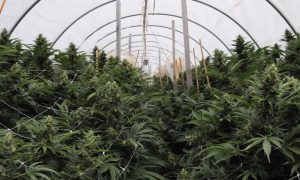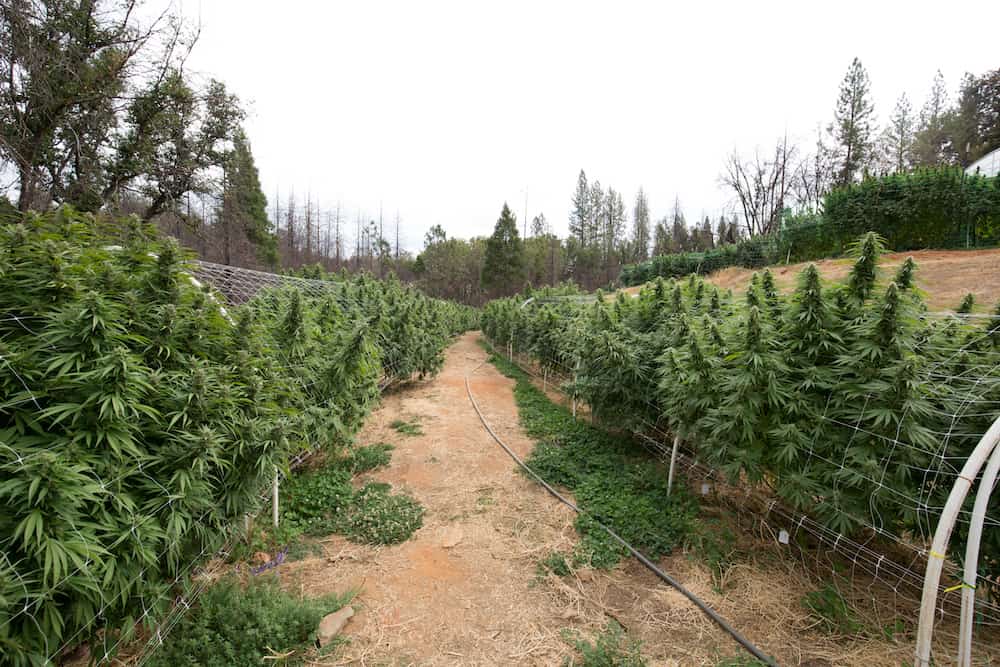Plant Growth Regulator (PGRs): Weed on Steroids?
Posted on: February 23, 2019, by : admin
Why exists such an interest in the PGRs for marijuana ?
For those people who have actually held thick buds of marijuana, numerous have most likely idea that visually: ““ This is a top-quality flower””. When compared to buds that are lighter and fluffier in look, the thick compact look is specifically obvious. Maybe likewise you have actually discovered a powerful fuel/gas scent when provided with imported or aesthetically outstanding ““ high grade ”. These are normally dead giveaways that the marijuana might have been grown utilizing plant development regulators (PGRs) .
.Increased earnings margins.
However, there is likewise another aspect which plays a significant function in the growing need for PGRs: increased revenue margins. With marijuana quickly ending up being an industry , increased yields per harvest and much shorter development cycles, have actually stimulated an interest in PGRs from industrial point of views. With financially rewarding returns for growers, it is intriguing to keep in mind that the international PGR market is to rise from $3.5 Billion observed in 2014, to $6.4 Billion by 2020.

Courtesy of Humboldt Seeds
.What are Plant Growth Regulators?
Discovered in the late 1920s and 1930s, PGRs have actually been utilized in farming for years to increase the business practicality of crops. In more current years, fears about the security of some artificial PGRs emerged. Due to their evident hazardous nature, lots of have actually consequently been prohibited for usage on consumable food crops considering that the 1970s and are considered pesticides in lots of nations. Some might recognize with the ““ Alar scare ” which cost the United States apple market over a $100 million, after the questionable PGR daminozide was considered to be a ““ likely human carcinogen” ” by the United States federal government. This specific kind of artificial PGR, that hinders hormone paths is typically considered a ““ Plant Growth Retardant ”.
To start specifying precisely what plant development regulators are we require to comprehend plant hormonal agents, likewise called phytohormones. It is these hormonal agents that PGRs act and affect upon. Plant hormonal agents are natural to the plant kingdom and likewise to animal hormonal agents, play significant functions in a plants development and advancement. It is typically accepted that there are 5 significant classes of natural plant hormonal agents (endogenous) that play crucial functions in a plants life cycle.
.Auxins Gibberellins Cytokinins Abscisic acid Ethylene.
They all have regulative functions and can either hinder or increase cellular development and activity. They frequently operate in tandem with one another in differing ratios throughout a plants life cycle. The table listed below programs the timing and overlap of the 5 significant classes and their significance throughout the developmental phases of a Cannabis plants life.
.How do PGRs impact plants.
So how do PGRs really control a plants development cycle and increase it’’ s yields? To comprehend this we require to have a look at signal transduction paths, hang in there!
.Controling Growth Cycles.
Plants make substantial usage of signal transduction paths throughout their life. They are feedback systems that permit plants to react to chemical and ecological modifications. Signal transduction paths operate in series of biochemical responses. From this a cell produces a reaction to a stimulus. Cell signaling in plant advancement typically includes a receptor ( i.e. for a hormonal agent or light particle) and a signal transduction path, which concludes with a cellular action that pertains to the plants advancement.
A typical system for plant hormonal agent action is the breakdown or activation of DNA transcription proteins. These proteins work as activators or repressors of growth-stimulating genes. Basically, repressors and activators imitate the stop and begin pedals on a vehicle. When a repressor exists, it stops the development of growth-stimulating genes, in parallel activators begin the transcription of growth-stimulating genes. In action to the signal transduction path (started by the existence of plant hormonal agents or PGRs), repressor proteins for instance are then broken down and the ““ stop breaks ” are gotten rid of. This permits the ““ automobile ” to drive ahead and produce growth-stimulating genes.
.Increased Yields.
PGRs increase yields by cellular growth through signal transduction paths. When development stimulating genes are triggered, cells start to increase and grow in size. Cell growth is mostly driven by water uptake into the cells cytoplasm, which builds up in the cells main vacuole. Here the main vacuoles volume broadens as water gets in the plant cell. As an outcome of this the cell wall likewise broadens through turgid pressure. This broadening external pressure from the additional water inside the plants cell is one cause for the included weight observed in crops grown with PGRs. This leads to the plant cells having actually increased water retention. Auxins likewise play functions in the enhancement of plant cell walls for development, this is referred to as the ““ Acid development hypothesis ”.
Here auxins basically acidify the cell wall, with the assistance of Expansion proteins to loosen up and broaden it. A plant’’ s cell wall is mainly made from cellulose which is a product that increases as auxins work to trigger cell wall development. From this, we can presume that cellulose product likewise adds to the included weight acquired with making use of PGRs. Relating this back to your flowers and fruits, this implies that when overall harvest weight boosts, the over-all quality reduces.
.Proof for PGRs’ ’ threatening.
The decision on whether PGRs threaten to human health continues to stay open for conversation. With distinctions in screening, policies and laws throughout the world, PGRs are considered as both safe in some nations and hazardous in others. In the USA and Europe they are mainly considered as pesticides, though still commonly utilized in farming. The PGRs that disrupt hormone paths (in specific Gibberellin) and their biosynthesis are seen to be the most unsafe.
.Possible danger to human health.
When thinking about making use of Cannabis from a medical viewpoint it would be best to prevent Cannabis grown with artificial PGRs where possible. There are numerous PGRs out there, here is a summary of some popular artificial PGR Gibberellin inhibitors:
.Environment contaminants.
As well as positioning a possible risk to human health PGRs being pesticides have actually been discovered to be toxic wastes. Recurring PGRs in the soil and water are revealed to have hazardous results on the gastrointestinal organs of fish and their embryos. Microbe variety likewise alters with PGR used soils. This ecological effect is most likely to be triggering more damage than recognized, due to soil run and seepage of marine systems.

Courtesy of Humboldt Seeds
.What PGR natural options exist?Due to the fact that at present the large bulk of the market are utilizing these, #ppppp> So far we have actually mainly talked about artificial PGRs. Are there any natural options out there? When it pertains to growing Cannabis and most crops for that matter we need to begin with the essentials: How can one best simulate nature ?. Using PGRs must be to improve the hereditary capacity of a Cannabis plant, so a great start, instead of utilizing artificial manufactured plant hormonal agents (which appear to have the more unsafe results) is to take a look at where we might discover comparable natural substances naturally.
.Chitosan.
Derived from chitin this natural particle is discovered in the exoskeletons of shellfishes, from Mantis shrimps to Beatles. Chitosan supplies structural assistance in the difficult shells of these animals. It is a significantly plentiful eco-friendly product with a low molecular weight. When chitosan is used as a foliar or soil soak to plants it has actually been discovered to show PGR qualities. Targeting a plant cells plasma membrane and nucleus, chitosan controls gene expression and other cellular procedures. NASA have actually likewise taken interest, try out chitosan to help plant development in area!
.Triacontanol.
This plant development stimulant can be discovered in a range of natural sources such as alfalfa meal, sugarcane and bees wax. Triacontanol is a ““ fatty alcohol ” and is often described as Melissyl or Myrcicyl alcohol. It is non-toxic, safe and ecologically friendly to take in. Research study has actually revealed Triacontanol to be an effective development stimulant, effecting fundamental metabolic procedures such as photosynthesis, enzyme activity, nutrient uptake CO2 assimilation and a lot more. In the right dosages Triacontanol considerably increases the quantity of chlorophyll in leaves, enhancing the rate of photosynthesis.
.Last Thoughts.
With making use of PGRs continuing to grow, it will be intriguing to see how they pursue to contribute in the future of farming and Cannabis. There is lots of space for research study in this location, however there appear advantages and expenses to utilizing PGRs. Plant development regulators are basically a human effort at ““ bio-hacking ” a plants biological system. With that in mind we have a ““ you return what you put in” ” situation. It appears that if sourced naturally, PGRs can have favorable up-regulating impacts on the development and advancement of plants, with less unfavorable repercussions and health issues. When developed artificially PGRs that control development cycles and yields come at the expense of poorer quality and possible health risks.
For more details: https://www.humboldtseeds.net/en/blog/plant-growth-regulators-weed/
The post Plant Growth Regulator (PGRs): Weed on Steroids? appeared initially on High Times .
.
Read more: hightimes.com
